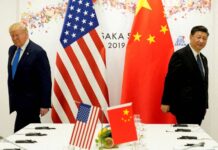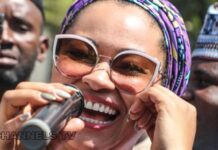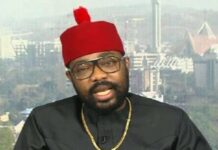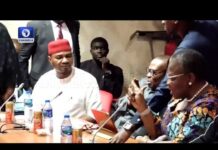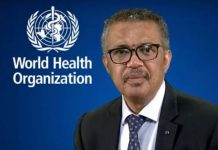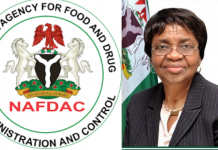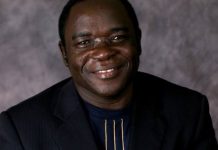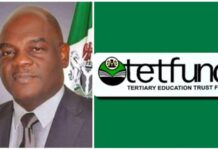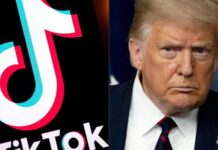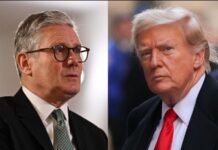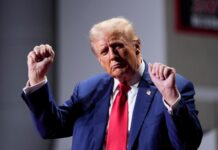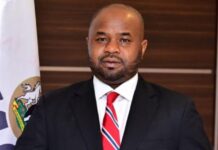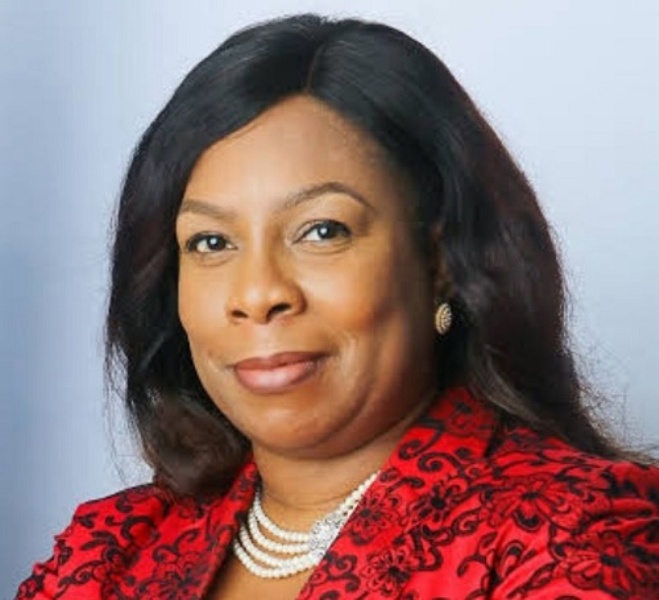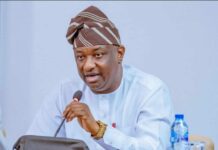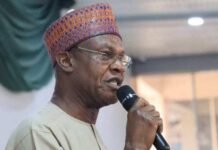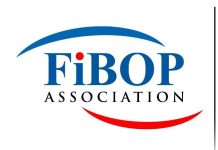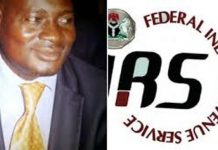Nigeria: Papering over the cracks – HSBC
Highlights
Higher oil prices have boosted Nigeria’s external position and provided a veneer of macro stability…
…but the economy’s oil dependency and structural shortcomings are evident in a tepid pace of growth and fiscal fault lines…
…while national elections pose a near-term risk to the outlook
Higher oil prices mask structural shortcomings
Higher oil prices have brightened Nigeria’s macro outlook, boosting export earnings and the supply of foreign exchange, improving the external position and supporting NGN stability. The trade account registered a surplus equal to 6.2% of GDP in Q1 2018, capital inflows have recovered following last year’s FX reforms and enticed by attractive government yields, while FX reserves have almost doubled over the past 18 months.
The stability of the exchange rate has supported a faster pace of disinflation in recent months, helping headline price growth slow to 11.6% y-o-y in May from more than 16% a year earlier. We think this disinflation trend, together with concerns over growth, could prompt the Central Bank of Nigeria (CBN) to cut rates during Q3.
Yet, in our view, these gains merely mask the economy’s unresolved structural shortcomings. Economic growth remains sluggish, and reliant on the rebound in oil output while the non-oil economy, which accounts for about 90% of GDP, continues to languish with many service sectors still mired in contraction. Joblessness continues to rise, up almost three-fold in three years to 19% in Q3 2017, pushing the number in poverty to 87 million. Meanwhile, current account improvements may have pivoted on higher oil prices, but they also derive from on-going import restrictions and limited FX access for many sectors of the economy.
All told, we see growth capped at about 2.5% over the next two years – a welcome recovery from the 2016 contraction, but less than half the rate of the previous cycle.
The growth outlook may benefit from fiscal stimulus following the passage of the 2018 Budget, delayed for six months, which targets a 22.5% increase in government spending. But this expansionary stance may also prove to be a key source of macro risk if Nigeria fails to address its fiscal fault lines, including the ongoing reliance on oil revenues, inadequate non-oil tax collections and a large share of its budget directed to debt service. The decision to issue external debt to redeem more expensive short-term government securities is helping reduce debt service costs in the near term, but exposes the fiscal position to exchange rate risk in the event of a future decline in oil prices and NGN devaluation.
Election-related spending may compound these fiscal concerns while the poll itself raises macro risks given political uncertainty, fractures within the ruling All Progressive Congress (APC), and President Buhari’s waning approval ratings.
Oil prices and macro stability
External gains
Oil has had a big impact on Nigeria’s macro balances given that it accounts for 80% of total exports and 60% of government revenue. Buoyed by higher prices and an increase in production, oil exports have gathered pace, rising by 50% y-o-y in Q1 2018 (chart 1). As a result, FX supply through the current account (chart 2) has outpaced the increase in FX uses (chart 3), the trade account has moved into a healthy surplus – registering 6.2% of GDP in Q1 –and the current account improved to a surplus of almost 5% of GDP (chart 4).
The broader impact has been bolstered by FX reform – last year’s introduction of the NAFEX and the devaluation of the NGN (see Nigeria: NGN devalues 15% at new FX window for investors, 24 April 2017) – and attractive yields for government securities that have allowed Nigeria to regain access to capital markets. Portfolio equity flows and money market instruments have been the primary channels, with gross capital inflows exceeding USD6bn in the first quarter of this year (chart 5), while the government also issued USD2.5bn in 12-year and 20-year Eurobonds in February 2018.
Stronger oil exports and increased capital flows have helped the CBN rebuild its foreign exchange reserves, which have almost doubled since the end of 2016 to USD48bn following several years of sustained depletion (chart 6). These external dynamics have also supported exchange rate stability, with the NGN trading at 360 against the USD for the past nine months, and some convergence in the FX market (chart 7) as the interbank rate (NIFEX) moves towards the NAFEX.
Inflation dynamics and the CBN
FX stability has supported faster disinflation in Nigeria, with headline price growth moderating from 18.4% y-o-y at the start of 2017 to 11.6% in May 2018. Food and core inflation has been decelerating (chart 8), and the notable slowdown in monthly inflation rates (chart 9) suggests price pressures should ease further over the coming months. We think inflation will reach single digits in H2, before liquidity pressures from an expansionary budget take effect and start to push price growth higher (see CEEMEA Economics Quarterly: The tide turns, 5 July 2018).
Nevertheless, we think the combination of disinflation, sluggish non-oil growth, and positive real rates (chart 10) will prompt the CBN into 100bp of rate cuts in the third quarter of this year.
Oil and the fiscal outlook
The benefits higher oil prices and production confers on Nigeria’s external position and FX market should also provide some support for government revenues. This was already evident in last year’s numbers that showed gross government revenue up by 36% to NGN6.9tn in 2017, largely due to the 50% jump in oil revenues (see chart 11). Indeed at current oil prices there may be some upside risks to government revenues this year given that the 2018 Budget adopted a cautious oil price benchmark assumption of USD51/bbl.1 We estimate the breakeven oil price in 2017 to have been USD127/bbl.
Against this, however, Nigeria’s reliance on fuel imports means rising international oil prices are pushing up the cost of fuel subsidies, estimated by the Petroleum Products Pricing Regulatory Agency (PPPRA) at USD250m in May alone.2 Oil prices at current levels therefore suggest a fuel subsidy that could total USD1.5bn in H2 2018, and about USD2.5bn for the year as a whole, which would equate to almost 20% of last year’s gross oil revenue.
Nigeria’s structural shortcomings
Higher oil doesn’t translate into stronger growth
Whatever benefits oil may bring to Nigeria’s nominal balances, however, there remains significant vulnerability given the structural shortcomings afflicting the economy and its ongoing oil dependence.
For one, the gains that have been achieved following the rise in oil prices have not translated into non-oil growth. The non-oil economy, which accounts for 90% of GDP, expanded by just 0.8% y-o-y at the start of 2018. As shown in chart 13, momentum has been constrained by sluggish growth in the agriculture sector and persistent contractions in the real estate, trade, and construction sectors. Stripping out agriculture makes the picture even worse, with non-oil, non-agriculture growth stagnating at the start of 2018 and contracting by an average of 1.0% y-o-y since 2016.
Sluggish growth contrasts with PMI readings over the past 18 months, which have improved in tandem with oil prices (chart 15). These gains, however, have yet to be seen in the GDP data.
For the economy to expand at a faster pace, a stronger recovery in non-oil growth needs to gain traction. The non-oil slump is particularly stark when compared with the pace of expansion before oil prices fell, with growth some 6pp slower than the average between 2011 and 2015.
Falling real wages, rising unemployment
One reason for this has been the squeeze on purchasing power and consumer spending from high inflation. Meanwhile lending growth to the private sector remains sluggish, on average contracting in nominal terms over the past 12 months (chart 16), in part due to fiscal dominance and bank financing of the fiscal deficit. We also think that while FX supply has improved on oil and capital inflows, access to FX still remains an issue for many sectors of the economy, with goods and service imports down by 45% when compared with the 2011-2015 period (chart 17).
These factors are among those seen as most problematic for doing business in Nigeria, alongside the country’s long-standing structural impediments such as inadequate infrastructure, corruption, an inefficient government bureaucracy and policy instability (chart 18). This mirrors the assessment of the IMF in its 2018 Article IV report, which argued that “a large infrastructure gap, high gender and income inequality, pervasive corruption, low financial inclusion, and the ongoing humanitarian crisis in the North East remain continuous concerns”.
There has been a clear feed-through to the labour market. Joblessness has been rising rapidly, up almost three-fold over the past three years, with headline unemployment sitting at 18.8% as of Q3 2017, and one in three youths without work.
Renewed oil sector disruption
The weak pace of economic growth at the start of the year has been followed by signs of a downturn in oil output, with recent OPEC data showing a marked drop in production in Q2 (chart 19) as a result of renewed disruption to oil infrastructure in the Niger Delta. Exports are likely to have weakened as a result, with FX earnings and government revenues also taking a hit. When combined with the more challenging external environment – the IMF has reported capital outflows since April – lost oil revenues help explain the plateau in FX reserves in recent weeks. In our latest forecast revisions, we pared our GDP growth estimates to just 2.4% in 2018 and 2.8% in 2019 (see CEEMEA Economics Quarterly: The tide turns, 5 July 2018).
The reform plan. And its problems
Over our forecast horizon, the economy should receive some support from easing inflation pressures and the fiscal stimulus contained in the 2018 Budget. Perhaps there is also some upside for the growth outlook from the efforts that have taken place towards improving the business environment, as part of the government’s Economic Growth and Recovery Plan (EGRP).3 Indeed Nigeria was among the 10 countries implementing the most regulatory reforms to make it easier to do business in 2016/17 in terms of the World Bank’s Doing Business assessment, with reforms to improve the ease of starting a business, dealing with construction permits, registering property, getting credit, and protecting minority interests.
These efforts are to be welcomed.
Nonetheless, the regulatory environment remains restrictive, evident in Nigeria’s overall rank of 145 out of 190 countries in the World Bank Doing Business survey. Meanwhile weak institutions, infrastructure bottlenecks, disappointing macro dynamics, and poor basic health and education outcomes weigh heavily on the country’s competitiveness, leaving it languishing in 125th position out of 137 countries in the World Economic Forum’s 2017/18 competitiveness rankings.
Fiscal and FX concerns persist
Faster implementation of the 2018 Budget, which places a continued emphasis on infrastructure projects may also offer some upside to our growth forecasts, but is likely to put pressure on Nigeria’s already-stretched fiscal metrics. According to the CBN, the fiscal deficit widened to 4.7% of GDP in 2017 as spending growth significantly outpaced revenue collections (chart 20).
The 2018 Budget provides additional fiscal stimulus, with spending set to rise by 22.5% to NGN9.12trn (USD25bn) and the deficit forecast to be NGN1.95trn. The government expects NGN3.5trn to go to recurrent spending, NGN2.9trn to capital and NGN2.2trn to servicing debt.4 Despite the more favourable oil price environment, we are circumspect over Nigeria’s ability to raise revenues, and expect the budget deficit to be significantly bigger than the government’s projections at 3.5% of GDP.5 Initial figures for 2018 suggest the government is continuing to run sizeable monthly deficits.
Rapid spending growth may also complicate the inflation outlook and influence the direction of monetary policy, with fiscal risks and election-related spending among the central bank’s key inflation concerns at the May MPC meeting. Indeed, CBN staff forecasts project inflation to rise in H2 2018 given the rise in spending, and one of the nine MPC members voted for a rate hike in May (see Nigeria MPC (May): Still on hold, 23 May 2018).
Debt is low. But revenues are lower still
As we have highlighted in the past, Nigeria’s public finances need to be reformed to boost nonoil revenues, improve the efficiency of VAT or CIT collections, and address fuel subsidies.
Without these adjustments budget vulnerabilities will worsen, and Nigeria’s fiscal policy settings will become increasingly difficult to sustain (see Nigeria: Fiscal fault lines, 17 August 2017).
Debt levels are low but growing fast, increasing by 6pp of GDP over the past two years (chart21), but it has been debt service costs that have been the key budget risk and drain on the fiscal framework. In the first quarter of the year domestic debt service was equal to 2.2% of GDP and as high as two-thirds of federal government revenue.6 The rapidly rising cost of servicing debt has prompted the government to issue USD debt to manage this risk and redeem the more expensive T-bills. In the near term the strategy may offer some respite from higher borrowing costs, but it creates other potential sources of future vulnerability should oil prices fall or NGN weaken. At the end of Q1 2018, hard currency government debt accounted for 30% of total debt, up from 16% at the end of 2015.
FX distortions
Despite NGN stability and signs of convergence between the NIFEX and NAFEX, the exchange rate system remains a brake on growth. Nigeria’s FX system is still characterised by multiple rates and a range of restrictions that create inefficiencies, cause a misallocation of capital and frustrate the functioning of the local economy. The official central bank rate remains 15% stronger than the NAFEX at 305 against the USD, and the CBN still excludes a range of imports from accessing FX from the bank. In our view, a move towards a single and unified flexible exchange rate remains a critical reform and precondition to any meaningful acceleration in growth.
Yet crucial growth-friendly macro policies that would work to reduce Nigeria’s oil dependence, lift tax revenues, boost spending on key socio-economic infrastructure, and improve the flexibility and simplicity of the FX regime are unlikely to be tackled in the near term. For one, higher oil prices provide relief to policy makers that would have otherwise faced large imbalances, diminishing FX reserves and currency pressures, but there are also elections looming, which will also distract attention away from much-needed reforms.
Electoral uncertainty and macro risks
National elections are set to take place in February 2019, and are likely to add a layer of political uncertainty to Nigeria’s already disappointing macro outlook. Four years ago, President Muhammadu Buhari and the All Progressive Congress (APC), a coalition party established to take on the then incumbent Peoples Democratic Party (PDP), won the polls convincingly and achieved the first democratic transition of power in Nigeria’s history (see Nigeria elections: Historic win for opposition candidate, 1 April 2015).
Mr Buhari will once again lead the APC into the 2019 elections, although his approval ratings sit near all-time lows (chart 22). This largely reflects the impact of Nigeria’s painful recession in 2016-17 and the sustained economic hardship that has accompanied his presidency, including rapidly rising joblessness, and poverty (charts 23 and 24).
In addition to the economy, other key election issues are likely to include security and corruption. Security concerns persist across the country with the Boko Haram insurgency in the North East, militant activity that has disrupted oil production in the Niger Delta, and more recently escalating violence between cattle herdsmen
The polls look set to be a closely contested affair, particularly given that these policy challenges are exacerbated by strains within the APC coalition. In July several high profile APC members – including Senate President Bukola Saraki and House of Representatives Speaker Yakuba Dogara – broke away from the ruling party to form the Reformed All Progressive Congress, and potentially join forces with the PDP. This should be a political environment that favours a return to power for the PDP, yet the opposition remains weak and fragmented, and has yet to declare its presidential candidate.
At this stage little is known about the PDP’s policy platform, making it difficult to ascertain the implications of the election for policy. A second term for Mr Buhari however raises the risk of limited economic progress and further fiscal deterioration, prolonging the stagnation of his first term, particularly if there is no move towards completing reform of the exchange rate system or fiscal adjustments that diversify government revenues away from oil. In the near term, however, the election impact is likely to be negative as increased political uncertainty precludes policy reforms, weighs on confidence, deters investment spending and restrains the growth outlook.

